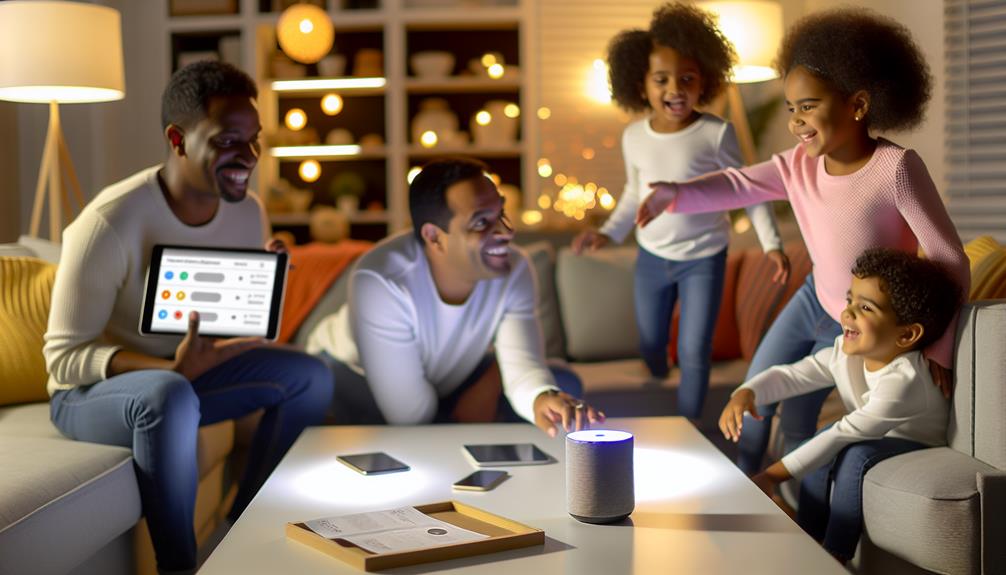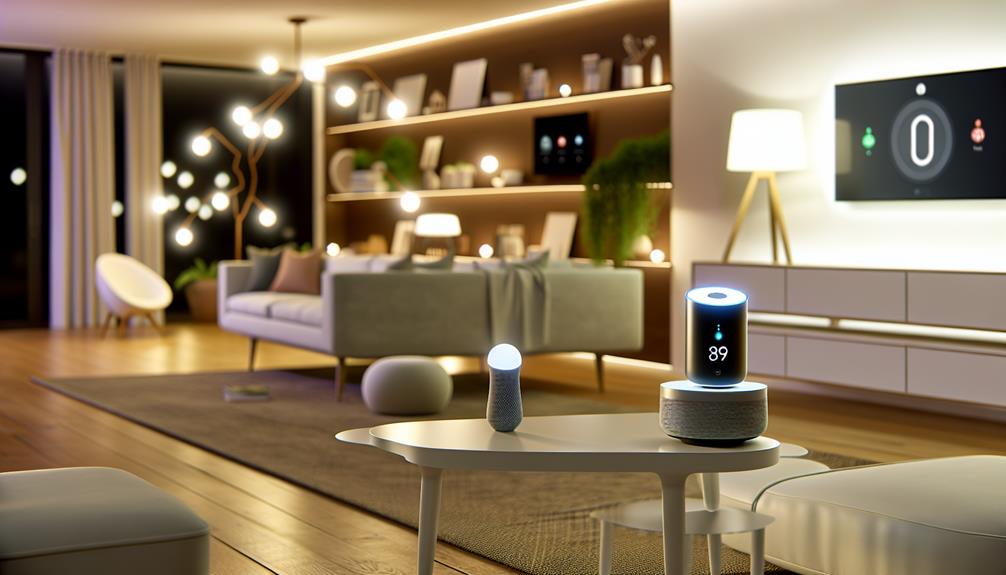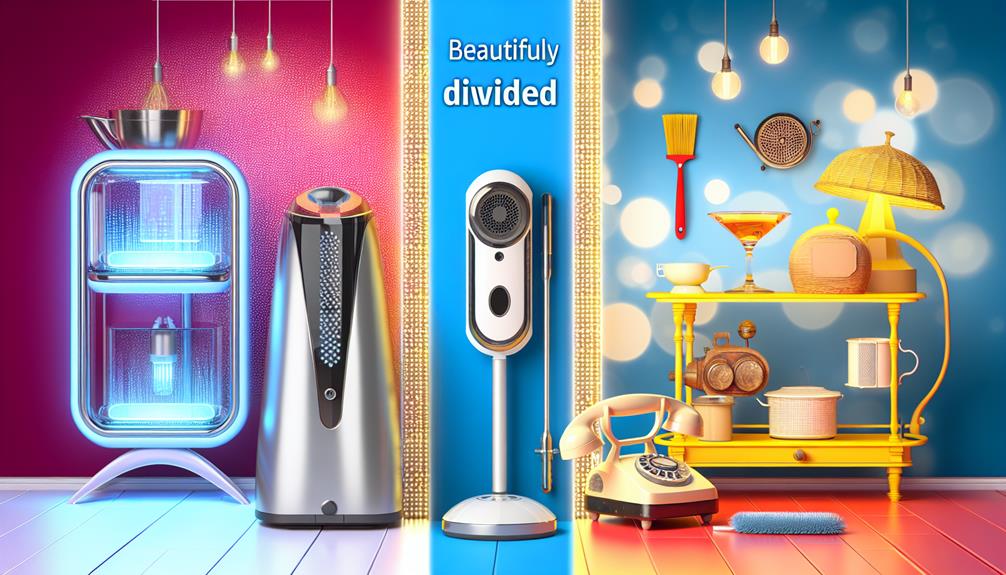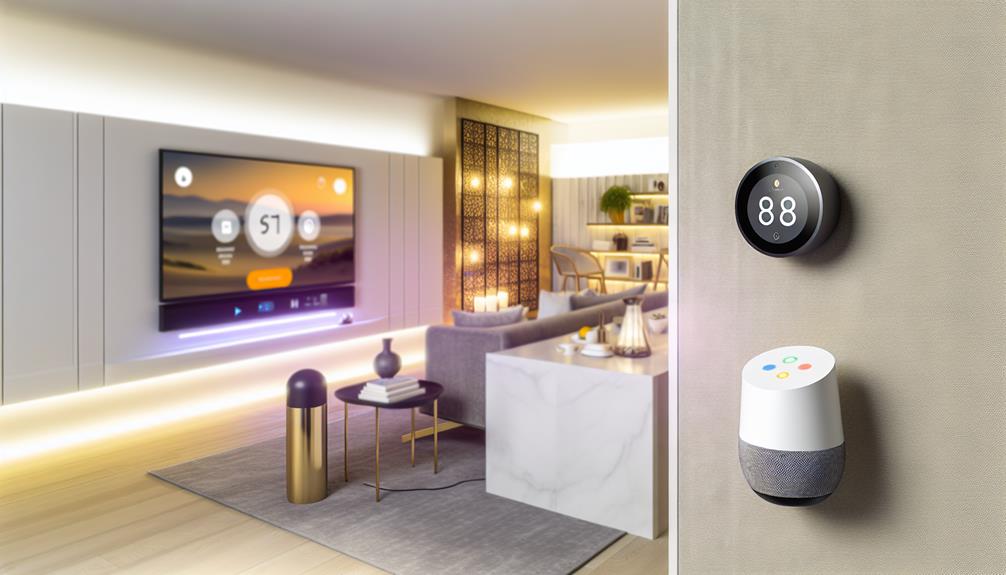Why Embrace Smart Technology in Everyday Life?
As smart technology continues to evolve, its integration into everyday life presents a compelling case for both individual and communal advancement. From streamlining daily tasks to enhancing energy efficiency, these innovations offer practical solutions that cater to modern needs. Moreover, the potential for improved security and personalized environments cannot be overlooked. However, the implications of embracing such technology extend beyond mere convenience, raising essential questions about privacy, accessibility, and long-term sustainability. What ultimately drives the decision to adopt these tools, and how might they redefine our interactions with our surroundings?
Key takeaways
- Smart technology enhances efficiency and convenience, streamlining daily tasks and freeing up time for more meaningful activities.
- AI-driven home automation allows intuitive control of devices, creating personalized living experiences tailored to individual preferences.
- Energy-efficient smart appliances reduce consumption, promoting eco-conscious practices and contributing to a sustainable future.
- Enhanced security features, including remote monitoring and automated alerts, provide peace of mind and foster a sense of community safety.
- Wearable technology offers real-time health tracking, encouraging personal wellness and fostering community engagement through shared health achievements.
Benefits of Smart Technology
Smart technology increasingly enhances various aspects of everyday life, providing numerous benefits that streamline tasks and improve efficiency. One prominent area where smart technology shines is in smart health. Devices such as wearable fitness trackers and smart health monitors empower individuals to take charge of their well-being. By providing real-time data on physical activity, heart rates, and sleep patterns, these technologies foster a greater awareness of personal health, enabling users to make informed decisions.
Additionally, connected appliances, such as smart refrigerators and thermostats, contribute notably to a more convenient lifestyle. These appliances can be managed remotely, allowing users to control their home environment from anywhere. For example, smart fridges can notify homeowners about food expiration dates or suggest recipes based on available ingredients, effectively reducing food waste and enhancing meal planning.
Moreover, the integration of smart technology in everyday life creates a sense of community and belonging. Users can share their health achievements, recipes, or energy-saving tips with friends and family, fostering connections and encouraging collective growth.
In this way, the benefits of smart technology extend beyond mere convenience; they cultivate a holistic approach to well-being and community engagement.
AI-Driven Home Automation
Home automation systems have transformed the way individuals interact with their living spaces, leveraging the power of artificial intelligence (AI) to create seamless and efficient environments. By integrating smart devices and connected appliances, these systems enable users to manage their homes with unparalleled ease.
Voice assistants play a pivotal role, allowing for intuitive control through natural language commands, enhancing user experiences and fostering a sense of belonging in a tech-savvy world.
IoT integration further amplifies the capabilities of home automation, facilitating device compatibility across various platforms. Users can enjoy streamlined setup processes, often guided by mobile applications that simplify the initial configuration and ongoing management.
However, as reliance on these technologies grows, it is essential to address privacy concerns and data management practices. Ensuring robust security measures while providing troubleshooting tips can empower users to navigate potential challenges confidently.
Enhancing Daily Convenience
Smart technology plays a pivotal role in enhancing daily convenience by streamlining routine tasks and introducing time-saving innovations.
These advancements not only reduce the effort required for mundane activities but also offer a personalized living experience that adapts to individual preferences.
As a result, individuals can enjoy a more efficient, tailored lifestyle that maximizes productivity and comfort.
Streamlined Daily Tasks
In today's fast-paced world, technology frequently plays a pivotal role in simplifying our daily routines. Streamlined daily tasks are becoming increasingly achievable through the adoption of smart technology, allowing individuals to embrace convenience and efficiency.
Smart kitchens equipped with connected appliances enable effortless meal preparation, while voice assistants can manage cooking timers, provide recipes, and even adjust smart lighting for ideal ambiance.
Automated cleaning solutions, such as robotic vacuums, free up valuable time, allowing users to focus on more meaningful activities. Additionally, wearable technology enhances our lives by offering health tracking capabilities, empowering individuals to monitor their fitness and wellbeing seamlessly.
In the domain of gardening, smart gardening tools simplify plant care, ensuring that even novice gardeners can cultivate their green spaces effectively.
Energy management systems further enhance daily convenience by improving energy usage, reducing costs, and minimizing environmental impact.
The seamless integration of these technologies fosters a sense of belonging to a community that values innovation and sustainability. By embracing these advancements, individuals can greatly enhance their daily lives, transforming mundane chores into streamlined tasks that promote a healthier, more connected lifestyle.
Time-Saving Innovations
Time-saving innovations have revolutionized the way individuals approach their daily routines, considerably enhancing convenience and efficiency. These advancements enable users to focus on what truly matters, fostering a sense of belonging and community through shared experiences.
Smart assistants, integrated with voice commands, offer a user-friendly interface, allowing individuals to control connected appliances effortlessly. Wearable devices, equipped with smart sensors, provide instant notifications about health metrics and reminders, adding a layer of personalization to daily activities. Mobile applications facilitate automated scheduling, ensuring that users can plan their day without the hassle of traditional calendars.
The seamless integration of these technologies has transformed mundane tasks into streamlined processes. Here's a quick overview of key innovations:
| Innovation Type | Example Uses | Benefits |
|---|---|---|
| Smart Assistants | Voice-controlled home systems | Hands-free convenience |
| Wearable Devices | Fitness trackers, smartwatches | Health monitoring on-the-go |
| Connected Appliances | Smart fridges, thermostats | Energy efficiency and control |
In embracing these time-saving innovations, individuals not only enhance their efficiency but also cultivate a stronger connection with their environment and community.
Personalized Living Experience
The evolution of technology has led to an increasingly personalized living experience, where daily convenience is tailored to individual preferences and needs. Smart technology enables the creation of customized environments that adapt seamlessly to our lifestyles. For instance, smart home devices learn user preferences over time, adjusting lighting, temperature, and even entertainment options to foster comfort and enhance well-being.
This level of personalization fosters a sense of belonging, as individuals can curate their surroundings to reflect their unique tastes and requirements. Imagine walking into a space that greets you with your favorite scent and perfectly adjusted lighting, all orchestrated by intuitive technology. Such experiences not only elevate daily routines but also promote a deeper connection to one's living environment.
Moreover, personalized living experiences extend beyond physical spaces. Applications and devices can analyze user habits to offer tailored recommendations, whether for meal planning, fitness routines, or leisure activities. These innovations empower individuals to optimize their lives, making technology an integral part of a community-oriented lifestyle.
Energy Efficiency Solutions
As households and businesses increasingly seek to reduce their environmental impact, energy efficiency solutions have become a crucial focus in the integration of smart technology. By harnessing renewable energy sources and utilizing smart appliances, these solutions enable significant reductions in energy consumption, promoting sustainable living practices that resonate with eco-conscious consumers.
Smart technology facilitates effective utility management through real-time energy monitoring, allowing users to track their energy usage patterns and identify opportunities for power optimization. Eco-friendly gadgets, such as smart thermostats and energy-efficient lighting systems, not only enhance comfort but also minimize waste, providing tangible benefits to the environment and the wallet alike.
Additionally, improving home insulation is essential for maximizing energy efficiency. Smart systems can adjust heating and cooling based on occupancy, ensuring that energy is not wasted when spaces are unoccupied. This proactive approach to energy consumption exemplifies the principles of green technology, encouraging a collective shift towards more responsible living.
In embracing these energy efficiency solutions, individuals and organizations can contribute to a sustainable future, fostering a sense of belonging within a community that values innovation and environmental stewardship.
Security and Safety Features
As smart technology continues to evolve, its role in enhancing security and safety within our homes has become increasingly significant.
Features such as advanced home surveillance systems, remote monitoring access, and automated emergency alerts provide homeowners with unprecedented control and peace of mind.
These innovations not only deter potential threats but also guarantee swift responses in emergency situations, underscoring the importance of integrating technology into our daily lives for enhanced protection.
Enhanced Home Surveillance
Security in the modern home has been revolutionized by the advent of smart technology, seamlessly integrating advanced surveillance systems that enhance safety and peace of mind.
Enhanced home surveillance through smart cameras offers homeowners an unprecedented level of control and awareness over their living spaces. However, this innovation also raises important privacy concerns that must be addressed to guarantee a responsible approach to safety.
The benefits of enhanced home surveillance include:
- Real-time alerts that notify homeowners of unusual activity.
- High-definition video feeds that allow for clear identification of individuals.
- Two-way audio enabling communication with visitors or intruders.
- Cloud storage options for easy access to recorded footage.
- Integration with home automation systems for thorough security management.
As families increasingly seek a sense of belonging and security, these features foster an environment where they can thrive.
Embracing smart technology, while being mindful of privacy implications, empowers individuals to create safer homes without compromising personal space.
Remote Monitoring Access
With the rise of smart technology, remote monitoring access has become a crucial feature in enhancing home security and safety. This innovative capability allows homeowners to maintain oversight of their properties and loved ones from virtually anywhere, fostering a sense of belonging and peace of mind.
The following table illustrates key aspects of remote monitoring access:
| Feature | Benefits |
|---|---|
| Remote Access | Monitor your home in real-time |
| Health Monitoring | Track well-being of family members |
| Instant Notifications | Stay informed of any unusual activity |
| User-Friendly Interfaces | Easy navigation for all ages |
As we integrate smart devices into our daily lives, the importance of remote monitoring access cannot be overstated. It not only enhances security but also serves as an essential tool for health monitoring, especially for families with elderly members or those with medical conditions. By leveraging technology, individuals can create a safer environment, ensuring their loved ones are protected and cared for, even when they are not physically present. This seamless connection fosters an enhanced sense of community and belonging, making smart technology a valuable addition to everyday life.
Automated Emergency Alerts
The integration of smart technology into daily life has paved the way for automated emergency alerts, which considerably enhance security and safety measures within homes and communities.
These systems provide timely emergency notifications, ensuring that residents are informed and able to respond swiftly in critical situations. With real-time alerts, individuals can feel a sense of belonging and security, knowing that their safety is prioritized.
Key aspects of automated emergency alerts include:
- Instant Notifications: Receive alerts directly to your smartphone, keeping you informed regardless of your location.
- Integration with Smart Devices: Connects seamlessly with home security systems to enhance overall safety measures.
- Community Safety Networks: Collaborates with local authorities to disseminate essential information efficiently.
- Customizable Alerts: Allows users to tailor notifications based on their specific needs and preferences.
- Multi-Platform Accessibility: Provides alerts through various channels, including text messages, emails, and dedicated apps.
Future Trends in Smart Living
As we look ahead, the integration of smart technology into everyday life is poised to redefine our living environments in profound ways. The convergence of smart city integration and wearable technology will create a more interconnected, efficient, and sustainable lifestyle. Cities will become increasingly responsive to the needs of their inhabitants, utilizing data to enhance services, reduce energy consumption, and improve overall quality of life.
The following table highlights key future trends in smart living:
| Trend | Description |
|---|---|
| Smart Home Ecosystems | Homes equipped with interconnected devices that optimize energy use and enhance convenience. |
| Health Monitoring | Wearable technology that tracks health metrics, providing real-time data for better health management. |
| Sustainable Infrastructure | Urban environments designed for efficiency, incorporating green technologies to minimize environmental impact. |
These advancements promise to foster a sense of community and belonging, as they encourage collaboration and communication among residents. By embracing these trends, we can look forward to a future where technology enhances our everyday lives while promoting sustainability and well-being in our communities.
Frequently Asked Questions
How Do I Choose the Right Smart Devices for My Home?
Choosing the right smart devices involves evaluating device compatibility with existing systems and aligning selections with user preferences. Consider factors such as functionality, ease of use, and potential integration to create an efficient, cohesive smart home environment.
Are Smart Technologies Compatible With Older Home Appliances?
Smart technologies can often enhance older appliances through smart plugs, enabling remote control and automation. However, appliance upgrades may be necessary for full compatibility, ensuring seamless integration into a modern, connected home environment.
What Are the Privacy Risks Associated With Smart Technology?
Smart technology presents significant privacy risks, particularly regarding data security and user consent. Unauthorized data access, inadequate encryption, and unclear consent processes can compromise personal information, necessitating vigilant awareness and proactive measures to protect users' privacy.
Can I Control Smart Devices Remotely When Traveling?
Yes, you can control smart devices remotely, enhancing travel convenience. Many systems offer mobile applications that facilitate remote access, allowing users to monitor and manage their devices from anywhere, ensuring security and comfort while away.
How Do I Troubleshoot Connectivity Issues With Smart Devices?
To troubleshoot connectivity issues with smart devices, first check for network interference that may disrupt signals. If problems persist, perform a device reset to restore factory settings, ensuring ideal connectivity and functionality within your smart ecosystem.



